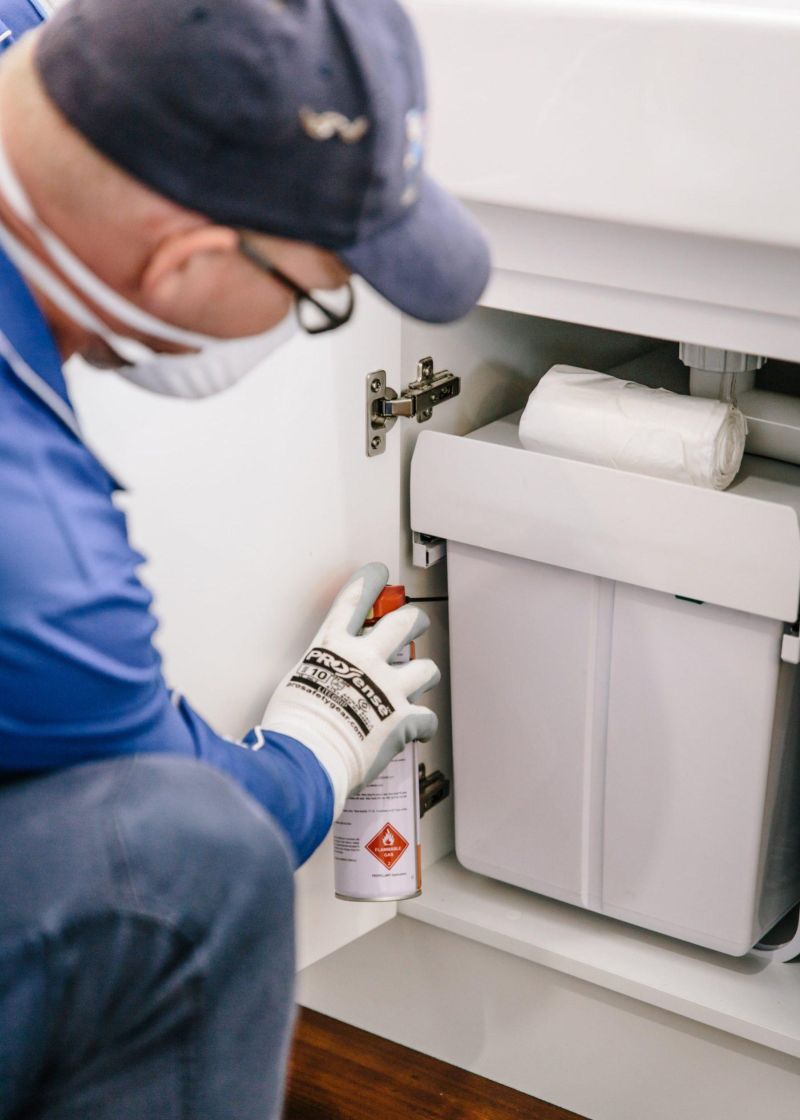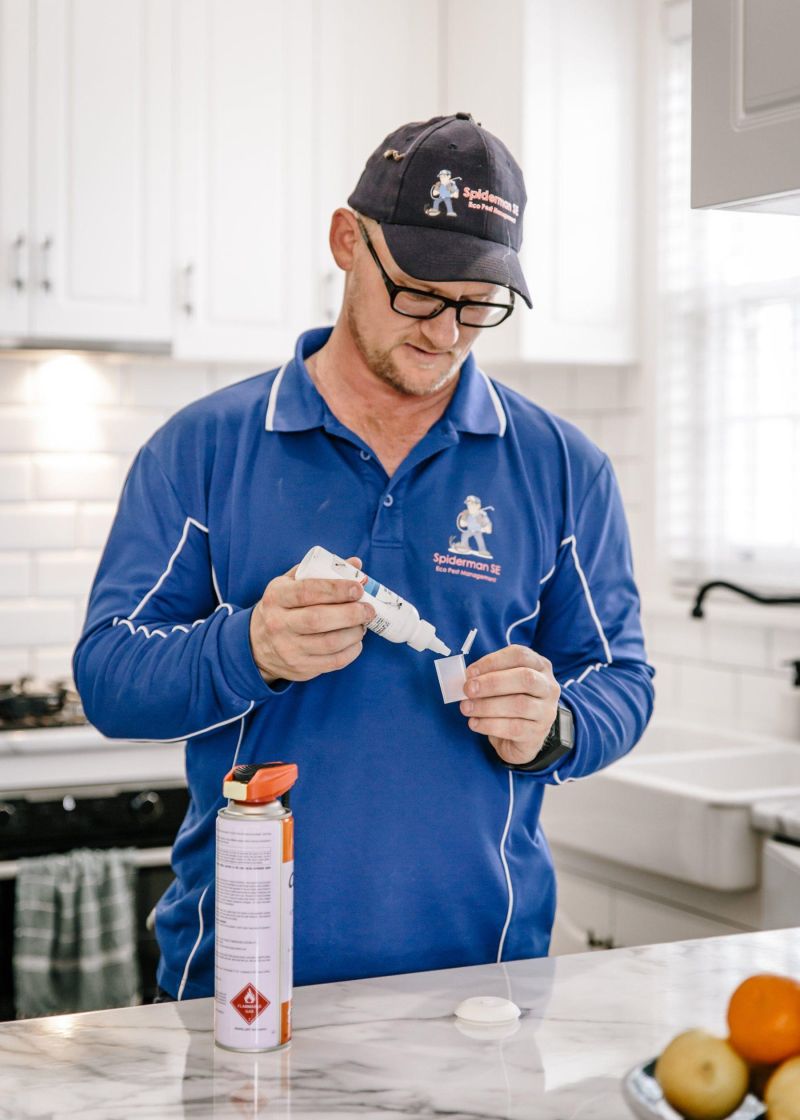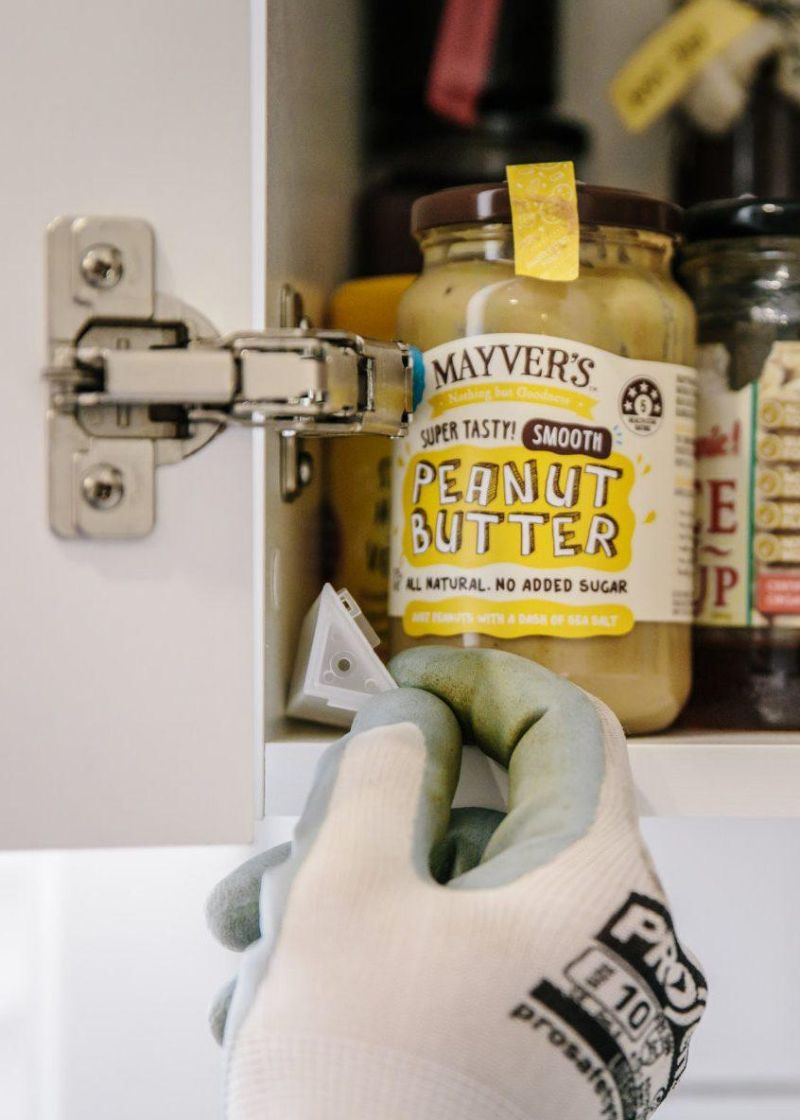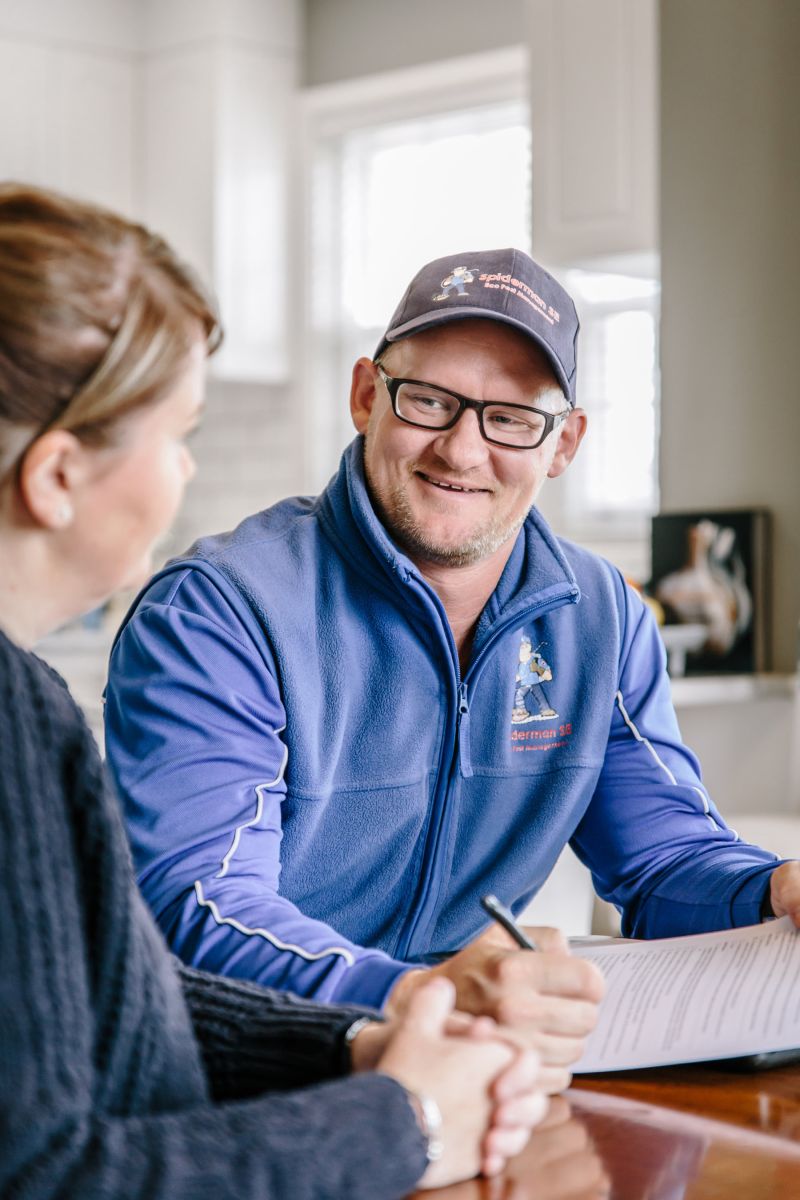Our Professional Ant Treatments
For successful ant control, it is essential to identify the ant species present correctly and, if possible, locate the nest.
Our treatments are designed to eliminate the source of the problem by killing the queen and the nest. We will use a combination of products to get the best results.
Whether you have ants invading your house, ants digging up dirt between your pavers or biting ants in your lawn, we have a solution.
Indoor ant treatments can include:
- Application of ant baits in areas of activity
- Use residual sprays to provide ongoing protection
- Dusts/powders are applied to roof voids
Outdoor ant/lawn ant treatments can include:
- Application of granules to lawns and pavers
- Use of residual sprays to provide ongoing protection
- Direct spot treatment of ant nests



The ultimate aim of any ant treatment is to eliminate the nest causing the problem. If you don’t completely kill the nest (including the queen), the population will rebound, and the problem will return.
With Spiderman SE, the ants don't come back!
How Our Ant Treatments Work
How do Ant Baits Work?
Ant baits consist of a food attractive to the ants and a slow-acting insecticide. Ants feed on the bait, return it to the nest and pass it on to their nest mates and the queen.
It needs to be slow-acting to give the ants time to take it back to the nest and spread it throughout the colony, before they start to feel its effects. As such, a noticeable drop in ant activity can take a week or more.
The challenge in using baits is to choose the correct bait for the ant species present, as they all have different food preferences. Baits can be based on sugar, protein or fat and come in liquid, gel or granule formats. This is where the expertise of Spiderman SE kicks in and we can select the best bait for your situation.
Specialist Ant Sprays
Some ant species have multiple nests as part of one “super colony,” which also contains multiple queens. For such species, baits always struggle to reach all parts of the nest and kill all the queens. In such situations, we also use specialist ant sprays.
These specialist ant sprays are “non-repellent”. The ants cannot detect them and walk over the treated surfaces. The insecticide has a delayed effect, so it can spread the insecticide to its nest mates over the next few hours before the ant dies.
Do the Ants Come Back?
Our treatments are designed to manage ant populations effectively and reduce their impact on your home or business. For many customers, a single treatment will do the job. However, if you’re in an ant-infested neighbourhood, ants will always be in the neighbour’s yard waiting to move in! In such situations, it will be more likely that you will need regular ant treatments to keep the ants at bay.

How to Prevent an Ant Problem
There is not much you can do to prevent an outdoor ant problem, except to have a professional ant treatment. However, you can do a few things to reduce the chances of an indoor ant problem.
Ants often come indoors looking for nutrition and moisture. So, if you remove sources of food and water, you will make your home less attractive to ants. Our top tips:
- Clear up any spilled food
- Clean down and under the oven/fridge regularly
- Do not leave unwashed dishes out overnight
- Do not leave pet food bowls out with food in or unwashed
- Food should be stored in tight “ant-proof” containers
- Put rubbish into sealed bins and stack it away from the house
- Fix any leaking taps/pipework

Ants in the house or taking over the yard can be very annoying.
Supermarket products just don’t seem to do the job – the ants keep returning!
Spiderman SE has the expert knowledge and specialist products to take care of your ant problem, for good!
FAQs
No, and we wouldn’t want to!
Ants are an essential part of the ecosystem, helping to aerate soil, recycle organic material, and control other insect populations.
Ants are also subterranean and often have multiple interconnected colonies, which means new colonies can move into treated areas over time. Our goal is control, not eradication—we aim to manage ant populations effectively and reduce their impact on your home or business.
A General Insect Treatment (GIT) is designed as a broad-spectrum solution for spiders and other general pests, creating a treated zone around the home or business. However, for ants, specialty treatments are required because ants have complex nesting structures and foraging behaviours that a standard GIT won’t eliminate.
Key Differences:
- General Insect Treatment (GIT): Uses a repellent insecticide that creates a treated zone and kills pests on contact. It kills ants on contact but doesn’t transfer to the colony, so it won’t eliminate the nest. Best used for spiders and general insect control; it will kill individual ants that walk across it, but it won’t stop the colony from returning.
- Specialty Ant Treatment: Uses non-repellent transfer chemicals, baiting, dusts, and granules to spread the treatment through the nest. It eliminates ants at the source by allowing them to pick up the treatment and spread it within the colony. Best for long-term ant control, especially for stubborn or high-pressure infestations.
We use a combination of products to target ants effectively. Each product has a specific purpose:
- Inside sprays (residual insecticides): Applied to surfaces where ants travel. These are non-repellent, so ants don’t detect them, allowing the treatment to be picked up and transferred to the colony.
- Outside sprays (treated zone applications): Applied around the exterior of buildings to create a treated zone that ants pass through. Unlike store-bought sprays, our treatments don’t repel ants, meaning they pick up the product and take it back to the nest.
- Baits (gel or liquid): Formulated to attract foraging ants, who carry it back to the colony to share. Baits work slowly to eliminate the entire nest rather than just individual ants.
- Granules (outdoor lawn & paver treatment): Used in garden beds, pavers, and lawns where ants nest. These break down gradually and are taken back to the colony.
- Dusts (for wall voids, roof voids, and cracks): A fine powder applied in wall and roof voids, cracks, and enclosed spaces where ants travel and nest. Ants pick up the dust and spread it through the colony, making it highly effective for hidden infestations.
- Crack & crevice aerosols: Used for tight spaces like skirting boards, electrical outlets, and entry points. These products are designed for targeted application without contaminating surfaces.
To help ensure the best results:
- Avoid using store-bought sprays (like Mortein) before the treatment. These can interfere with the products we apply.
- Keep food stored away and clean up crumbs. While baiting is designed to be attractive to ants, limiting other food sources will help encourage them to interact with it.
- Let us know if there are any specific problem areas. If you’ve noticed ants trailing, swarming, or nesting in particular areas, let us know so we can target them effectively.
It’s completely normal to see more ant activity after a professional treatment. Our products disrupt the colony and force ants out into the open before the treatment takes full effect. This is a good sign that it’s working!
Baiting, in particular, attracts ants before it eliminates the colony, so it may seem like the problem is worse before it gets better. Activity should start to decline within a few days and significantly drop within two weeks.
Yes!
Seeing dead ants is a strong indication that the treatment is reaching the colony. Ants naturally remove their dead from the nest, which is why you may notice piles of them in treated areas. This is part of the process and means the treatment is doing its job.
The timeframe varies depending on the size of the colony and environmental factors, but generally:
- You may see increased ant activity in the first few days as the colony is disrupted.
- Within a week, numbers should start to decline.
- Complete colony elimination can take up to two weeks.
No!
Please don’t use any additional sprays! Store-bought sprays like Mortein kill ants before they have a chance to transfer the treatment back to the nest. This reduces the effectiveness of our professional treatment and can prolong the issue.
Yes!
Keeping surfaces clean is important, but you should avoid using harsh chemical cleaners or high-pressure hoses in treated areas.
To maintain the effectiveness of the treatment:
- You can wipe down surfaces using a damp cloth with mild detergent.
- Avoid scrubbing or pressure-washing treated areas. High-pressure cleaning can remove the residual product.
- Don’t use bleach, ammonia-based cleaners, or strong disinfectants on treated areas. These can break down the treatment and reduce its effectiveness.
Ant Rid only works on sugar-feeding ants. If your ants are protein feeders, they won’t take the bait. Because we didn’t have live ants available to properly identify the species at the time of treatment, we used transfer chemicals instead of baiting, as these work regardless of the ants’ food preferences.
If ant activity hasn’t significantly declined after two weeks, please contact us so we can assess whether a follow-up treatment is needed.
However, our treatments can only be effective if all recommendations are followed to the letter. If instructions haven’t been followed—such as using store-bought sprays, wiping down treated surfaces with strong chemicals, or not allowing the bait to work properly—this will interfere with the treatment, and we may not be able to help further.
For many people, a one-off treatment is enough to keep ants under control. However, in high-pressure areas where ants are particularly active, quarterly treatments may be necessary to maintain control.
- Keep food sealed and clean up spills immediately.
- Store bins with tight-fitting lids and empty them regularly.
- Seal cracks and entry points to prevent access.
- Trim trees and vegetation that may provide a bridge into your home.
- Book regular pest control treatments to maintain long-term protection.
Our ant treatments start at $200.00.
The time required for ant treatments and associated costs can vary significantly based on the complexity and location of the ant infestation. Factors such as the size of the nest, accessibility, and the overall complexity of the treatment process may influence the duration and associated charges.

